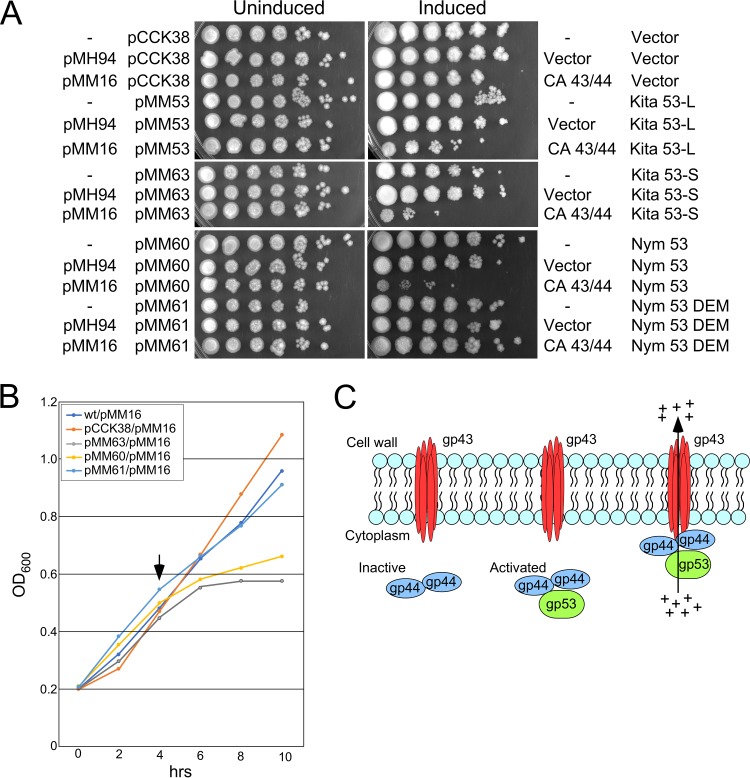FIG 7.
Kita gp53 is toxic in combination with CarolAnn gp43/gp44. (A) Plasmids pCCK38 (vector), pMM53 (Kita 53-long), pMM63 (Kita 53-short), pMM60 (Nymphadora 53), and pMM61 (Nymphadora 53 with DEM mutation) were electroporated into G. terrae strains carrying no integrated plasmid (‘-‘), or with integrated plasmid pMH94 (vector) or pMM16 (with CarolAnn genes 43 and 44), as indicated at the left; key plasmid features are indicated on the right. Liquid cultures of the plasmids were serially diluted 10-fold (right to left) and spotted onto solid media in the absence (‘Uninduced’) or presence (‘Induced’) of Atc inducer. (B) Growth inhibition by expression of Kita gp53 and Nymphadora gp53. Overnight cultures of G. terrae strains expressing CarolAnn genes 43 and 44 (plasmid pMM16) and either vector (pCCK38) or plasmids expressing Kita 53 (pMM63), Nymphadora 53 (pMM60), or the DEM 2C mutant of Nymphadora 53 (pM61) were subcultured into liquid medium at time zero and grown at 37°C. ATc inducer was added to each culture after 4 h (vertical arrow), and cell density (OD600) was measured every 2 h. (C) A model for CarolAnn 43/44-mediated defense. CarolAnn gp43 is proposed to be membrane located but inactive as an ion channel until infection with phage Kita (or relatives). During early lytic growth of Kita, gp53 acts either directly or indirectly through CarolAnn gp44 to activate the gp43 ion channel, leading to loss of membrane potential and of intracellular ATP, interruption of macromolecular synthesis, and loss of cell viability.

